

SCS Engineers presents a behind-the-scenes look at the special people who make us thrive and the roles they play within the organization.
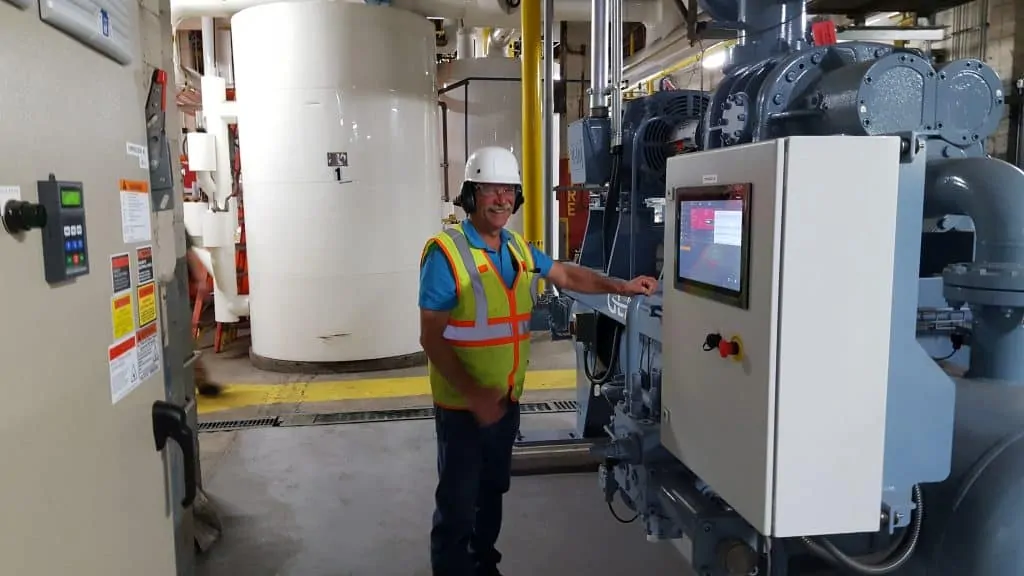
Gene Dumas joined SCS Engineers in 2015 as a Project Manager for the Risk Management
group with a thirty-year background in the ammonia refrigeration business. When asked what attracted Gene to SCS, he said “What SCS Tracer did is what I’ve always wanted to do. SCS Tracer has the passion for making the ammonia industry safer. SCS goes out of the way for customer service. Ammonia refrigeration is a very dangerous industry and what separates SCS from other companies is the commitment to safety.” For years, Gene has known Lee Pyle, Vice President and Project Director for SCS Engineers, within the ammonia refrigeration field and when he met her team at SCS, “I was blown away with their intelligence and passion. They are super smart and a good group. Lee put together a hell of a team.” Considering all those factors, it was an easy decision to join SCS Engineers.
Outside of SCS, Gene has been a member of the Refrigerating Engineers & Technicians Association (RETA) since 2004. RETA is a refrigeration organization with a mission statement to enhance the professional development of refrigerating engineers and technicians. Gene states “it’s basically the education sector of industrial ammonia refrigeration. We train, develop and certify the people who are actually working in the facilities operating systems.”
Eleven years after becoming a member, Gene was sworn in as a national president on October 1st, 2015 and was president for the 2016 year. Presently, he is a chairman for RETA and on his last year on the RETA National Board of Directors.
At SCS, Gene considers one of his greatest achievements is mentoring the newer generation to understand their industry better. “I think my mission in life is to mentor. Mentoring the younger people that are coming in, putting them under my wing, it’s very rewarding, intrinsically rewarding.” Gene comments, “I want to pass my knowledge to the next generation because we’re losing our skilled craftsman. It’s very critical that we train. A trained operator is #1: safe and we need more of them.”
For current and future SCS employees, Gene offers this piece of advice: “I came here because I wanted new challenges and wanted something new every day. The minute you 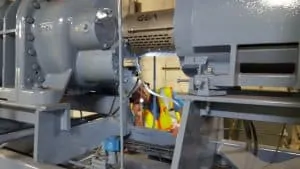
SCS Engineers is currently looking for a Senior Professional to add to our Risk Management Ammonia Refrigeration team. For more details visit the SCS Engineers Careers Page or click here to apply directly.
San Diego County is in the midst of an affordable housing shortage — and more units could be lost as government-aided housing agreements expire over time. And the state of California isn’t fairing much better based on a report released by the California Housing Partnership Corporation. BRIDGE Housing, a firm formed in 1983 to address the affordable housing shortage, is doing their part to fill the gap.
One of their recent developments, COMM22, is a mixed-use, mixed income, transit-oriented development located at Commercial and 22nd streets. The development combines much-needed affordable family and senior rental housing with day care facilities, commercial and retail space, affordable townhomes that are currently under development, and future market-rate flats.
Staff from the SCS Engineers Madison, WI office support the Wisconsin Department of Transportation’s Adopt-A-Highway anti-litter program. SCS-Madison adopted a 2-mile section of the Beltline Highway: one of the city’s busiest roads, collecting litter several times during the year to help keep Wisconsin roadsides beautiful.
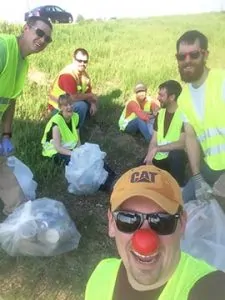
Financial analysis is an increasingly important issue in solid waste decision making. In an era where the mantra of “doing more with less” is on the lips of most political decision-makers, it is critical to assess the financial performance of operating and proposed solid waste programs. The three issues discussed in this article provide some guidelines on how these kinds of assessments can be conducted.
A variety of CCB/CCP related topics guaranteed to enhance your knowledge. Click the title to read or share these papers.
Jeff Marshall – Mitigating Hydrogen Sulfide Issues at Coal Combustion Residuals and Municipal Solid Waste Co-disposal Sites – Learn about the biological, chemical and physical conditions necessary for FGD decomposition and hydrogen sulfide generation. Marshall will explore technologies that remove and treat hydrogen sulfide from landfill gas and present recommendations for reducing the potential for FGD decomposition at co-disposal facilities.


Oil and gas processing facilities, federal and local governments, landfills, land developers, contractors, industries with industrial hygiene plans can spend too much money for too little information if they don’t have an understanding of the limits and capabilities of their equipment and methods before the development of their Air Monitoring Plan (AMP) . That’s before considering the risk to their employees and to public health.
Even if you can’t afford a dedicated air monitoring group, you can eliminate the health risks, overwriting a plan, or overburdening your budget. A cost-benefit analysis and integrating stakeholders’ goals can help provide the guidance you need to develop a balanced air monitoring plan.
Start with this list of considerations when developing an Air Monitoring Plan (AMP). The list is followed by tips and suggestions which are helpful under specific circumstances.
Location of the monitoring site is initially dependent on the monitoring objective. For example, once it is known that there is a requirement to monitor for peak ambient H2S at a microscale site, it reduces the monitoring site location to specific areas. Hence, the first task when evaluating a possible site location is to determine the scale for which a candidate location can qualify by considering the following:
1. Location and emissions strengths of nearby sources, especially major source;
2. Prevailing wind direction in the area;
3. Nearby uniformity of land use;
4. Nearby population density.
To select locations according to these criteria, it is necessary to have detailed information on the location of emission sources, the geographical variability of ambient pollutant concentrations, meteorological conditions, and population density. Therefore, selection of the number, locations, and types of sampling stations is a complex process. The variability of sources and their intensities of emissions, terrains, meteorological conditions and demographic features require that each network is developed individually. Thus, selection of the network will be based on the best available evidence and on the experience of the decision team.
Developing an Air Monitoring Plan (AMP) can be a daunting task. There are many decisions to make that have downwind ramifications relative to budget, logistical constraints, and labor requirements. In addition, there may be competing goals in regards to the project stakeholders. SCS has the experience developing and implementing air monitoring plans and systems to meet these challenges; including developing site specific and network-wide AMPs for various monitoring objectives. SCS also understands the costs and demands of the implementation of AMPs on industry and government.
If you need to perform Air Monitoring or are in the initial steps of developing an AMP please contact for expert advice and guidance specific to your region and industry. We have robust programs and experts nationwide. We can also incorporate the use of remote monitoring controls and monitoring by our FCC authorized drones.
Author: Paul Schafer, SCS’ National Expert Ambient Air Monitoring

Thank you for your friendship, your business, and the opportunity to serve you.
The Pennsylvania Department of Environmental Protection (DEP), Bureau of Waste Management, has awarded SCS Engineers (SCS) a contract to provide recycling and organics management technical assistance to local governments throughout the state. Brent Dieleman, SCS’s Project Manager, has years of experience administering these types of programs for the Solid Waste Association of North America.
Pennsylvania ratified “Act 101” in 1988 to manage waste and promote recycling across the Commonwealth. The DEP developed the Recycling Technical Assistance Training Program to help local governments comply with Act 101 by improving and expanding their collection and diversion programs. SCS will help administer and provide technical assistance to this Program. The comprehensive support provides for curbside and drop-off recycling programs, solid waste planning, public education, materials processing, equipment, technical training, environmental protection programs, and organics management.
Additionally, local governments can apply for technical assistance, up to $7,500 per applicant, to help expand and improve their recycling and organics management systems. SCS will work with applicants to assess their needs and refine the scope of their project. Once DEP approves a technical assistance project, SCS will then provide specialized, tailored training to each recipient.
SCS will help each grant recipient address the unique issues and challenges facing their program including, composting, collections, incentive-based programs such as pay-as-you-throw, and siting of new facilities. SCS anticipates providing technical assistance for up to 30 local governments annually.
DEP is tasking SCS with helping them find ways to further promote the Program across the Commonwealth and enable local governments to benefit from it. SCS anticipates presenting the initiative to local landfill owners and operators at a seminar in Harrisburg, Pennsylvania on June 9, 2017.
“In recent years Pennsylvanians have recycled nearly 17 million tons of waste, which removed almost 16 million tons of carbon dioxide emissions from the air. That is equivalent to saving the electricity used in 2.18 million American homes per year or taking 3.34 million passenger vehicles off the road for one year,” said Brent Dieleman. “We’re facilitating the DEP to help local governments efficiently expand their recycling programs.”
SCS Engineers met a tight, non-negotiable regulatory deadline to get the new plant on-line while meeting non-toxic effluent standards.
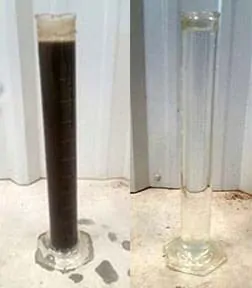
Everyone enjoys before and after pictures; just look at the results New Hanover County’s program is producing. This and other County programs are helping this North Carolina county reduce reliance on landfill disposal while creating a comprehensive and sustainable solid waste management system that is protective of the environment.
In 2016 a new wastewater treatment plant was commissioned at the New Hanover County Landfill. The new facility processes approximately 65,000 gallons per day (GPD) of leachate using state-of-the-art ultrafiltration (UF) and reverse osmosis (RO) technologies to meet or exceed federal and state treatment standards.
The raw leachate is pre-treated in an existing aerobic lagoon followed by a sequencing batch reactor (SBR) to reduce organic constituents. The pretreated effluent then flows into the membrane system. Using state-of-the-art membrane filtration technology, including ultrafiltration (UF) pictured at lower left, and a reverse osmosis (RO) system, pictured lower right, to produce crystal clear, effluent discharged to an upper tributary of the Cape Fear River.
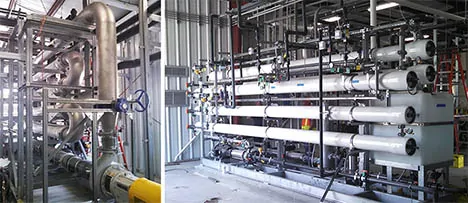
The new facility can process 75,000 GPD and the Wastewater treated through the new system meets state Drinking Water standards for quality.
Tough surface water discharge standards and predictable performance in cold weather drove the design to use UF/RO systems. The results are impressive; metals including arsenic are BDL, ammonia <0.2 ppm, and TSS < 2 ppm. The system produces approximately 13,000 GPD of RO concentrate that is pumped to the working face and safely disposed of in the landfill. The County has certified operators that have played a big role in getting the plant shaken down and running smoothly.
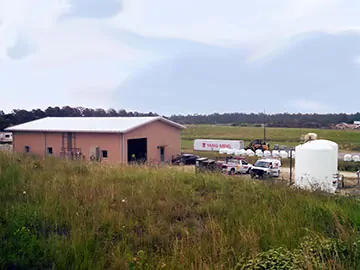
“New Hanover County is an industry leader in adopting proven technologies to better manage solid waste, and protect the environment. This kind of planning and approach can benefit many other public works departments,” stated Bruce Clark, PE, BCES, LEED AP®, and SCS Engineers National Expert on Waste Conversion.
As Joe Suleyman, the County’s Environmental Management Director put it, “Let’s face it – people move to New Hanover County because they love to be in, on, or near the water. Our technical staff is composed of very talented folks who have environmental science and biology backgrounds. They believe in what they’re doing to help protect our delicate coastal environment, and this state-of-the-art system is a huge stride towards meeting our own expectations and those of the citizens we serve.”
See more case studies, services, and professionals on the SCS Engineers – Liquids Management Website
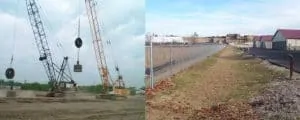
Historic fill is common on properties that were once rural and have become prime redevelopment sites as communities expanded. The fill may include contaminated materials like foundry sand, ash, demo and construction debris, and even municipal waste. In the past, these materials were used to fill wetlands or change the grade of the property before initial development. Today regulations have evolved, and state agencies require property owners to manage these materials appropriately during redevelopment. Also, particular types of historic fill are often not robust enough to structurally support your new building.
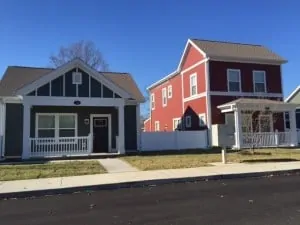
There are many different kinds of fill materials – each with different physical properties and different potential contaminants. Knowing what is on your property before you start designing the site layout, and certainly, before you start digging, will help you plan your project to save time and money, and to receive state agency approval.
Before You Buy
The more you know about the property and the earlier you know it, the better prepared you will be to make decisions about how best to protect yourself from potential environmental liabilities and prepare for the environmental and geotechnical issues that historic fill can cause. Since every property is unique, the first thing you need to do is gain a thorough understanding of the property’s history and past use. Invest in a comprehensive Phase 1 Environmental Site Assessment (ESA). Consider it a starting point for clues about the possible types and amounts of historic fill which may be present on the property.
If the results of the Phase 1 ESA warrant it, conduct a Phase 2 ESA and geotechnical study to collect soil, fill, groundwater, and soil vapor samples. The Phase 2 ESA and geotechnical studies will help you understand if fill and contaminants are present and the best options for addressing them during the development planning stage.
Historic fill on a property is no longer the impediment to development that it once was. Take these steps to get ahead of potentially contaminated historic fill, and keep your project on time and budget.
By testing early, performing a proper geotechnical evaluation, and incorporating design adaptations where needed, you can successfully develop projects with historic fill within your schedule and without breaking your budget.
SCS professionals are available to answer questions or concerns you may have pertaining to commercial, residential, or private development on brownfields – we provide remediation, brownfields, and Environmental Due Diligence services nationwide. Contact or one of our experts.

Ray Tierney, PG, is a Vice President of SCS Engineers and one of our National Experts on Sustainability. He has 30 years of experience in environmental and sustainability engineering and has helped a wide range of organizations control and reduce their legacy environmental impacts and liabilities, lower their costs, obtain grants and permits to expand, and implement cost-saving practices. Ray serves the Midwest region and projects throughout the U.S.
JohnTabella, PG, LEED AP®, is SCS Engineers National Expert for Environmental Due Diligence and for Federal Services. In this capacity, he oversees all aspects of environmental services opportunities and projects primarily throughout the eastern seaboard and supports on opportunities and projects throughout the U.S.
Floyd Cotter specializes in solid waste management projects. His project work involves all areas of solid waste management including planning, permitting, transportation, landfill design, construction, and monitoring. Floyd is also experienced in general civil engineering, construction oversight, environmental site assessments, closure and post-closure plans, and permit and contract document preparation. Floyd is located in the Central region.
Randy Bauer has nearly 3 decades of experience conducting environmental site assessments, subsurface investigations, groundwater monitoring programs, soil and groundwater remediation, and geotechnical investigations at industrial hazardous waste and solid waste facilities. Randy is available to answer questions on the western seaboard.